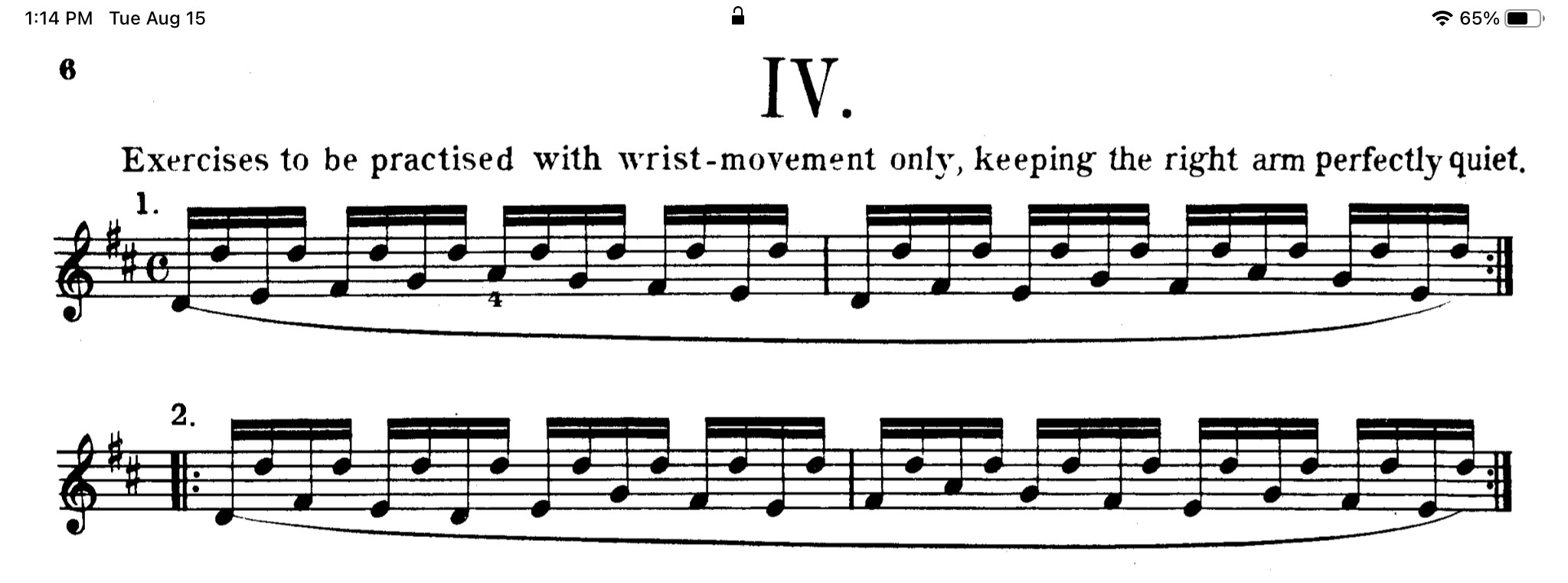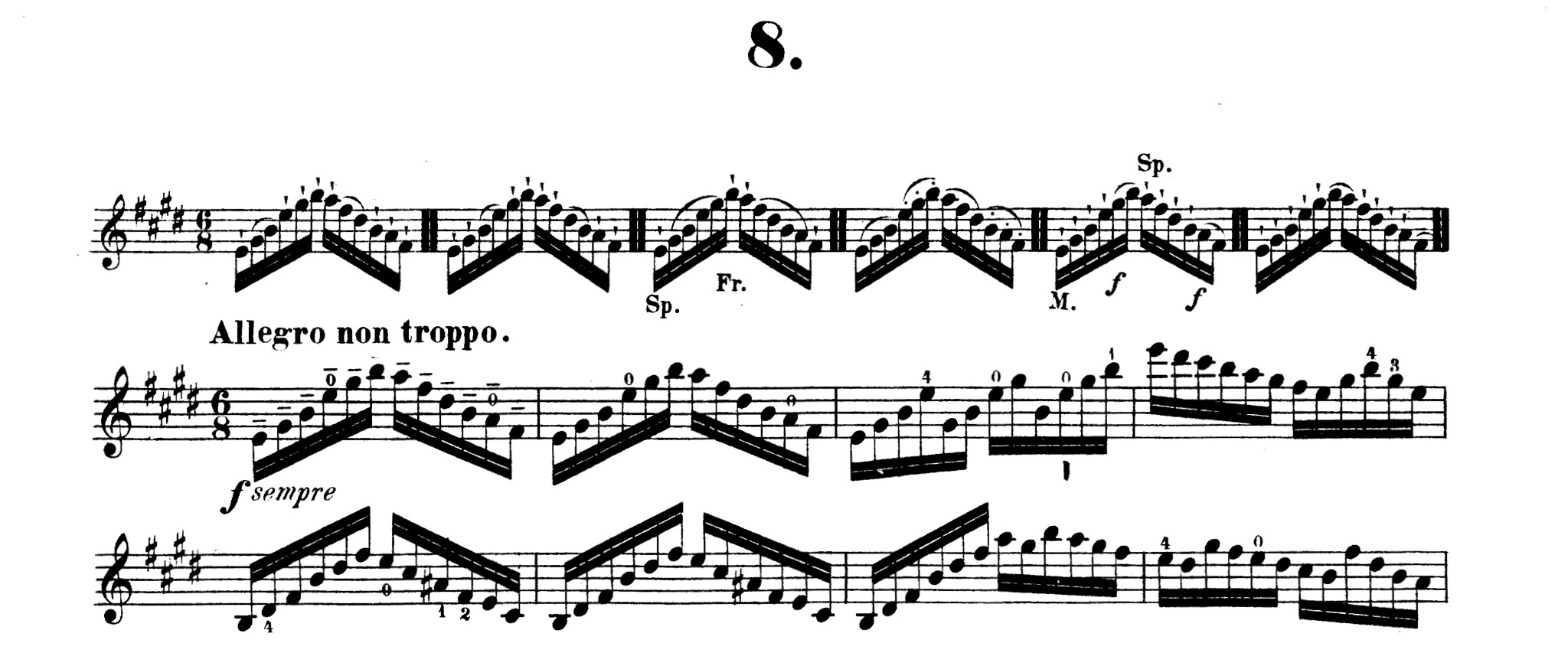
This is a follow-up to my YouTube video The Art of Effortless String Crossing.
Here is a compilation of important etudes for string crossings not mentioned in the video. There are thousands of variations and options out there. You can use this guide to help select studies that would be most helpful based on the repertoire you’re currently working on. Please note that this set is mainly recommended for intermediate and advanced players. All these etude books are in the public domain and available for free on imslp.org. However, if you do wish to own a hard copy, I will provide affiliate links wherever possible. Most of these have a viola version available as well.
1) Schradeick: The School of Violin Technics Book 1, No. 4
For smooth string crossing across 2 strings under a slur, mostly involving the bow rocking motion.
2) Kreutzer: 42 Studies, No. 27
Smooth string crossings, with shifting and bringing out 2 voices. Please note that different editions of the Kreutzer etudes are numbered differently. Here is what it looks like.
3) Ševčík Op. 2: School of Bowing Technique (especially Books 4 & 5)
This is string crossing bootcamp!!! Over a thousand variations on a theme in book 5. Endless bowing and articulation combinations – just about everything you might encounter in repertoire. Book 4 has been very helpful to me, because it imitates some very common string crossing scenarios in orchestral and solo works that can get easily uncoordinated under pressure. Pick and choose the variations that would help you in your situation. Here are some examples from Book 4:
1 + 2 pattern:
2 + 1 pattern:
1 + 3 pattern:
2 + 2 pattern:
3 + 1 pattern:
Group of 6
Group of 8
The examples above are based on the same chord sequence. There are also a TON of bowing variations.
4) Kreutzer: 42 Studies, No. 8
This is a very widely-practiced etude in E-major that works so many technical elements in one. Intonation in the difficult key of E-major, arpeggios that build a good left hand frame, shifting, the detaché bowstroke, and of course, coordinated string crossings. There are some bowing variations as well.
5) Rode: 24 Caprices, No. 8
It can be a good follow-up to Kreutzer 8 – a good alternative, but also more difficult, in my opinion. Some editions include bowing and articulation variations. The metronome marking is also varied among editions; it is merely a guide. Please choose a comfortable tempo that will help you achieve your goal.
6) Rode: 24 Caprices, No. 2
This is a great staple caprice. I recommend working a little bit on some of the previous etudes on the list before tackling this one.
7) Dont: 24 Etudes & Caprices Op. 35, No. 5
A great alternative to Rode 2.
I hope this guide is helpful to you – it is my go-to. There are a TON of string crossing etudes out there, including many excellent exercises for beginners at various stages. Please leave a comment and share with me your favorites that I didn’t mention here.














Kylie says:
Thankyou so much for these Inna, very helpful with my orchestra repertoire and also with my solo Bach. It can take ages to find the etudes that you need and here are fabulous ones that cover everything! 😁
Inna Langerman says:
You’re very welcome, Kylie! The amount of options can definitely be overwhelming! Also, I just realized that these might make more sense in a video, so I’ll be putting that out (hopefully) by this weekend!
Mohammed Kébir says:
Inna,
I commend you for your very good posts and YouTube videos: they are to the point, very precise and give us tools that we can use immediately to improve our technique. Thank you so much for these. Please keep posting them for our benefit.
Also, your site is very neat: easy to retrieve info when needed. Congrats!